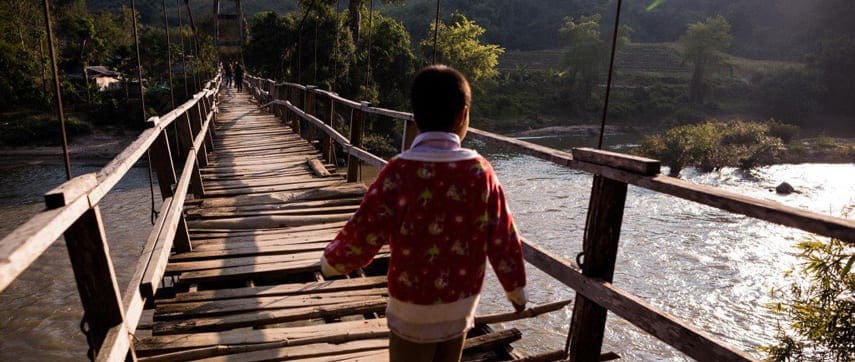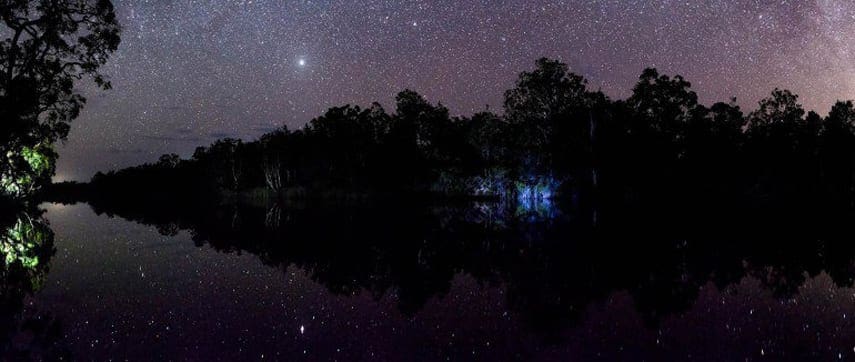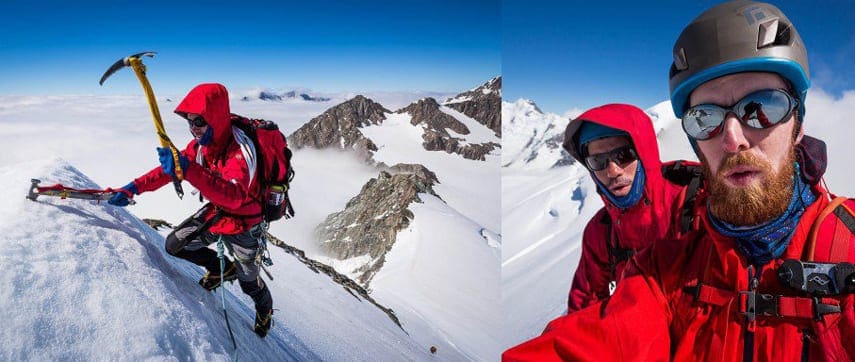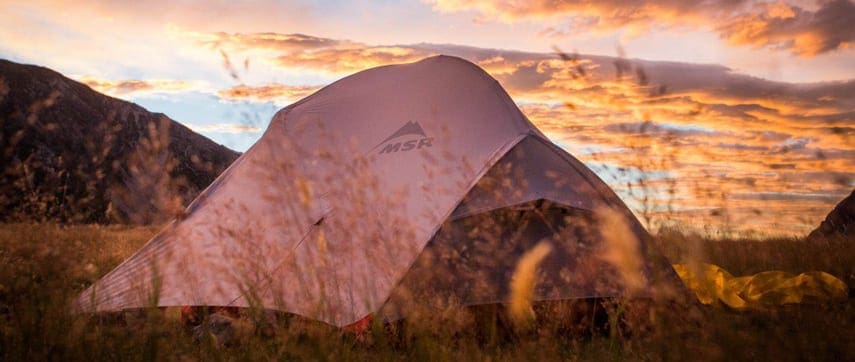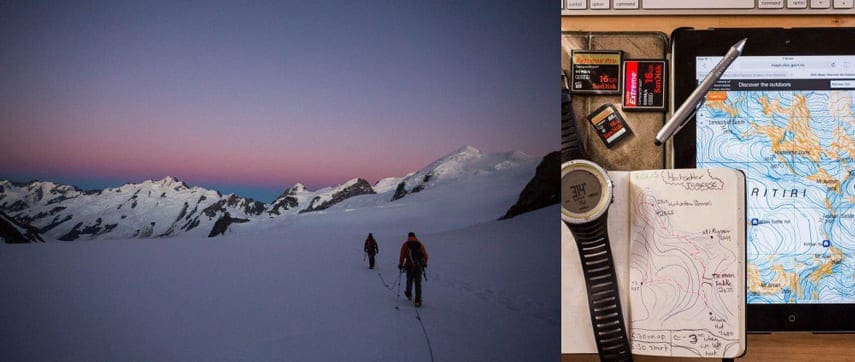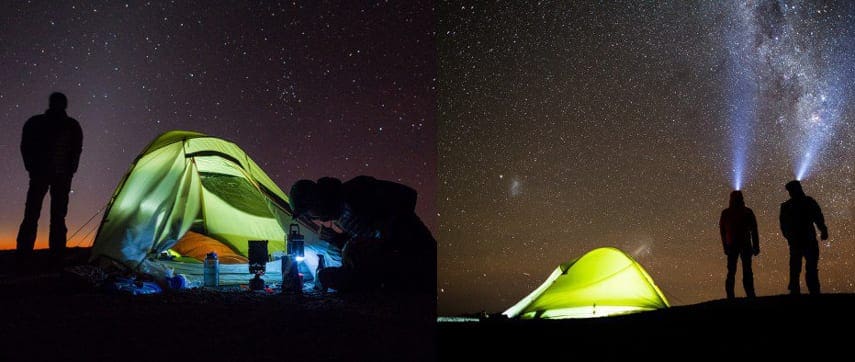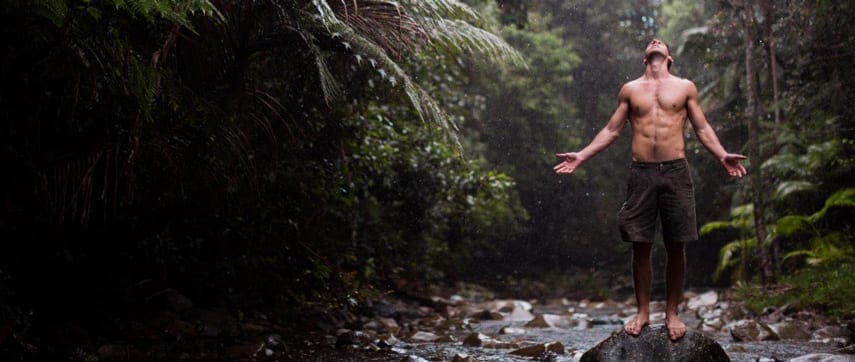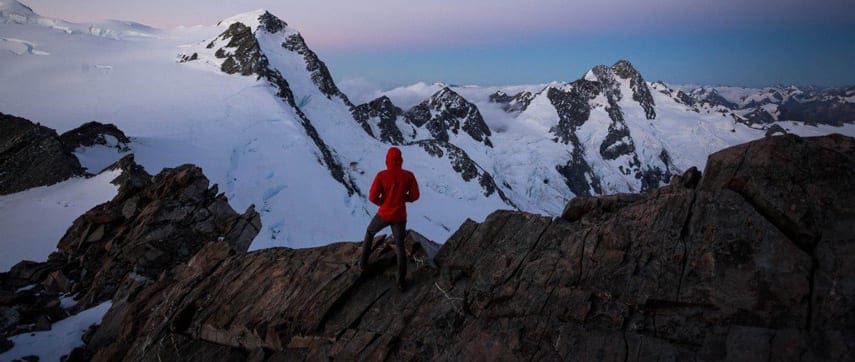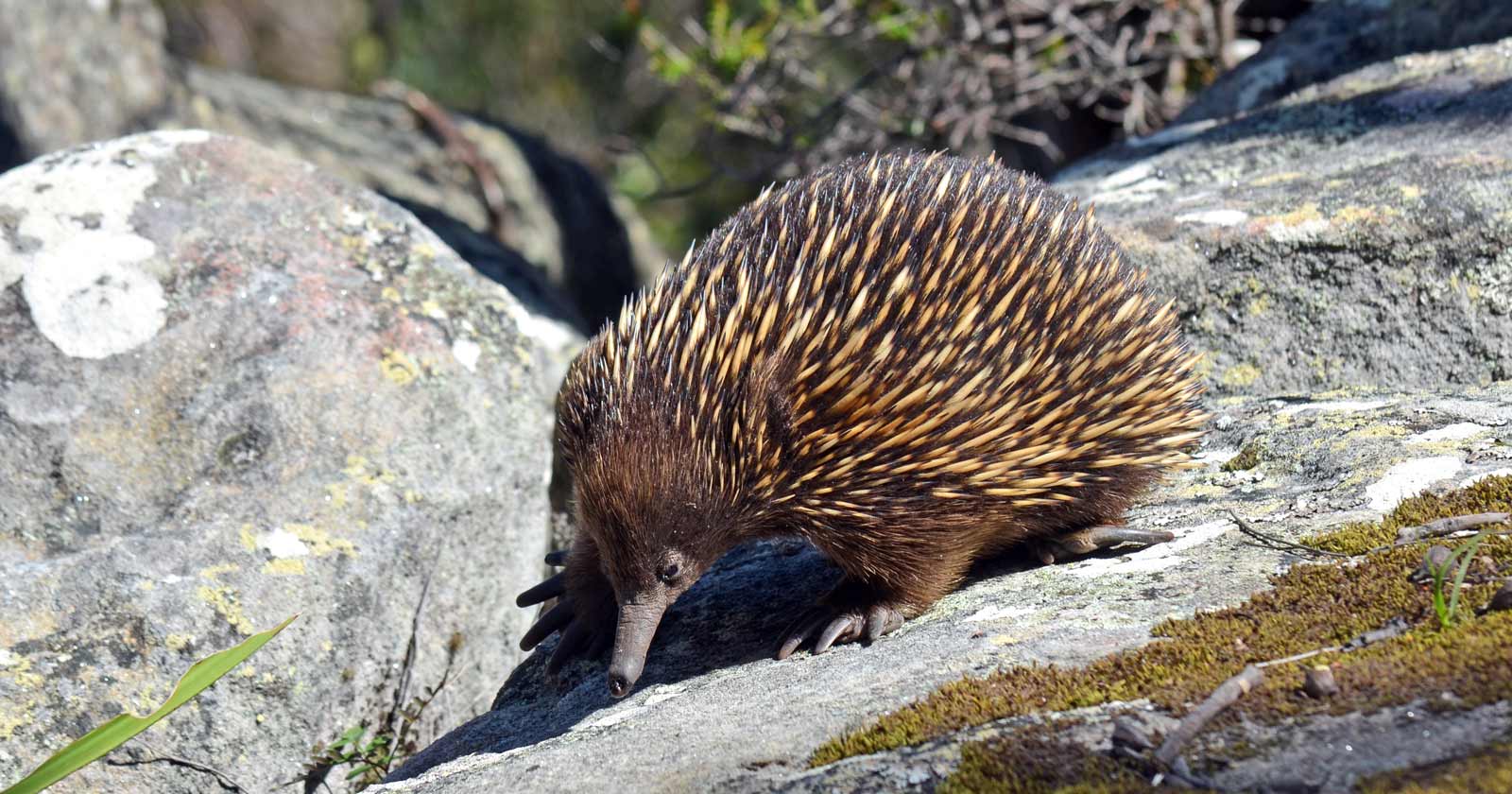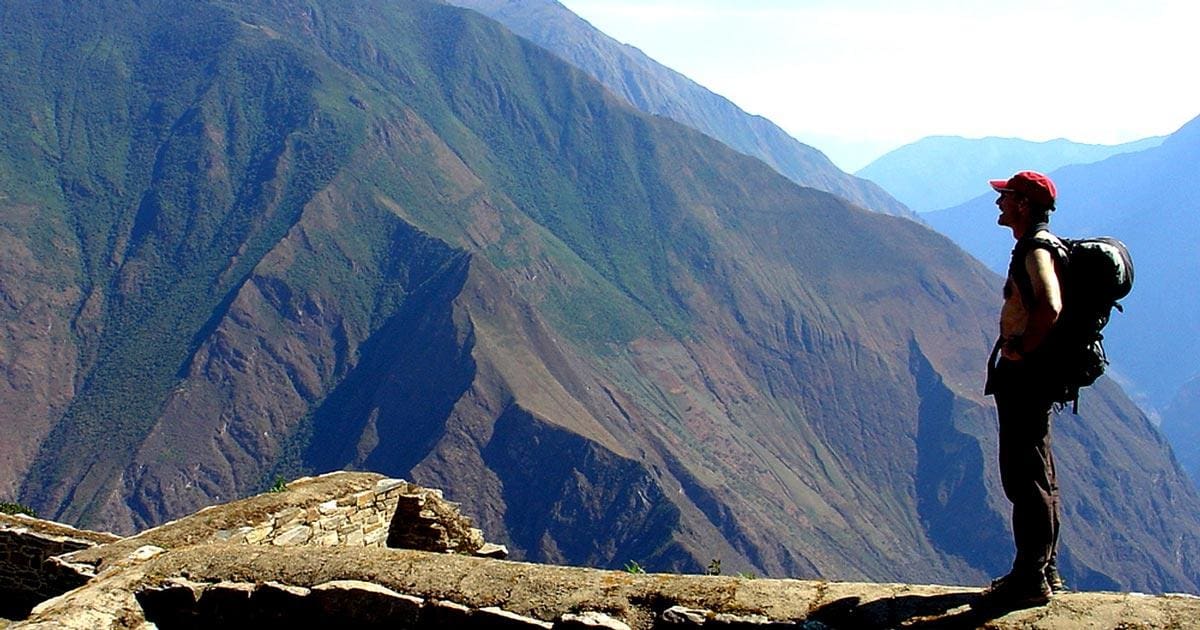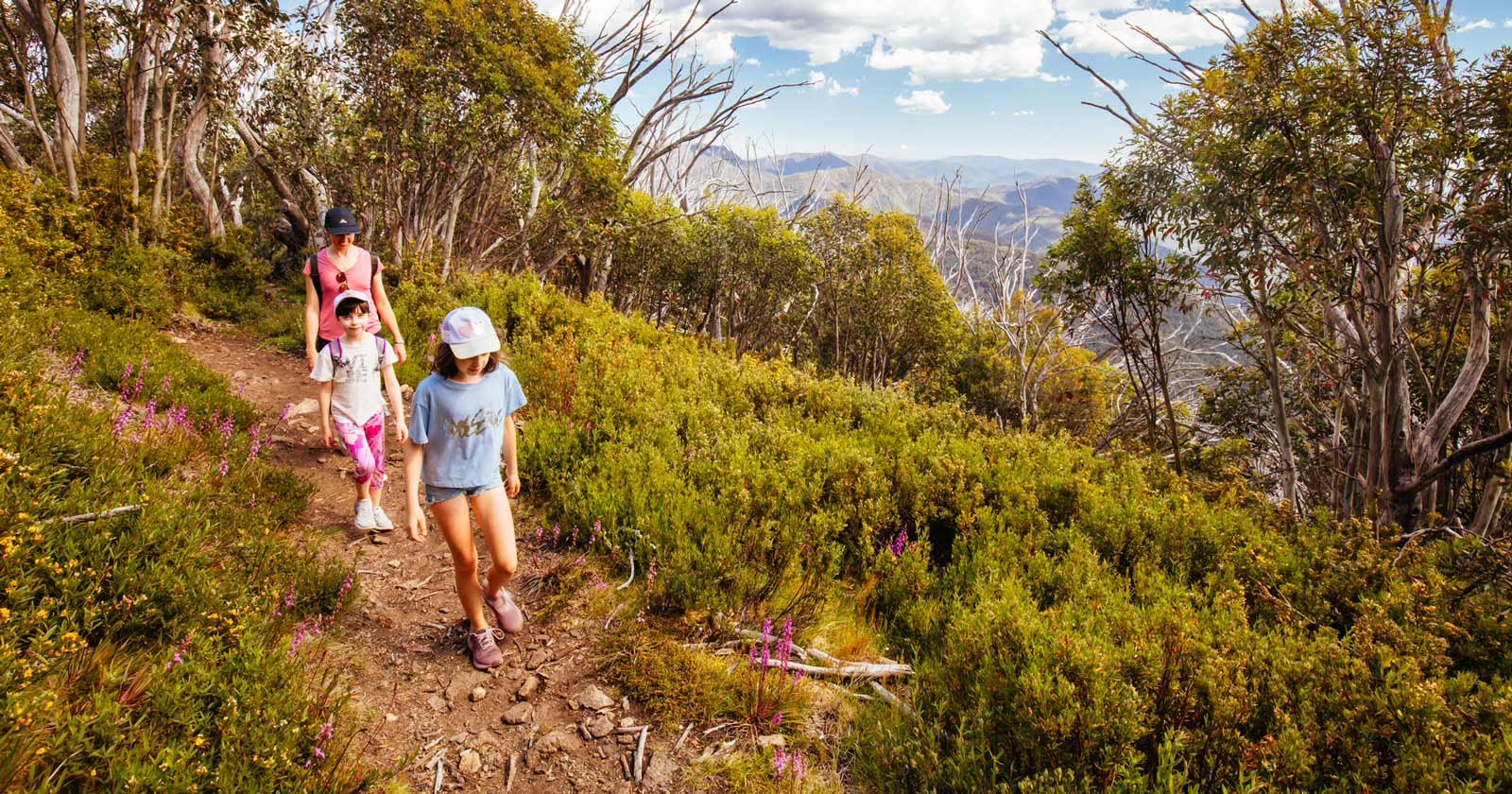What are the secrets to great adventure photography?
When I was asked to write an article about adventure photography tips, my mind went into overdrive… where to begin! After some consideration I decided to avoid focusing (pardon the pun) on camera settings and shooting techniques, which is dangerous territory and would probably just lead to a long winded article and ‘technical data overload’ for readers. Instead I’ve tried to look at some equally important & often overlooked aspects of photographing the outdoors that might not initially spring to mind.
Get inspiration from others
For me, one way to grow as an image-maker is to surround myself with the work of others who are far more experienced than I am. Instagram and Facebook and the Internet in general, have made it easy to follow your favourite photographers and gain insight into how they operate.
Equipment
Now you’re looking at some great photo makers, lets move onto that old chestnut… your kit. It really doesn’t matter what camera you’re using now, most modern offerings are more than capable of capturing quality timeless photographs. Just learn how to make that beast sing. Knowing your camera inside out will go a long way in maximising your chances of getting great images. Read the manual, and do a search online, there are endless great tutorials and articles that can explain the various settings and options available and when you might use them. As far as my kit goes – I’ve always used Canon gear simply because it’s what I started with and the gear is super reliable. Currently I’m shooting with 5D MkIII & mkII bodies and a collection of L Series lenses. A little Sony A7II also just joined the family, for when lugging the big Canon kit around isn’t practical.
Be prepared
Make sure your gear is clean, organised, and ready to go before you need it. Someone once said that the best camera is the one in your hand (or something like that…). When trekking and climbing I use a nifty little gizmo called a Capture Clip made by Peak Design which allows my Digital SLR camera to be holstered from any backpack shoulder strap, ready for deployment at a moments notice. Depending on the activity and weather conditions, I’ll keep my camera handy on the clip, or even secure it directly to my climbing harness for some vertical endeavours. Remember to prep and check your gear often, especially the night before a early start or important shoot. There’s nothing more disappointing than seeing the potential for an amazing photograph materialise in front of you, only to discover a dead battery, or forgetting to check your cameras exposure settings and receiving a black frame for your troubles. Sleeping with batteries or keeping them warm in your jacket can prolong their life in cold conditions, and there are great portable solar charging options from companies like Power Traveller that can keep your gear up and running for extended trips.
Study the light and weather patterns
This one goes hand in hand with many of the adventurous activities you’ll be photographing. You’re no doubt already aware that having decent grasp on weather and climate is something that’s vital for enjoying the outdoors in safe and productive way. Knowing how this can translate into good images is another valuable skill. Sometimes the two might not quite align, i.e. shooting rock climbing in a storm might look epic in photos, but it’s going to probably be quite dangerous. Finding that happy medium is key. Know you sunrise and sunset times, full moon cycles, tidal patterns, avalanche situation, expected rainfall, etc. Take a compass, it might save your life one day when you get lost… but you can also use it to orient your tent/camp to capitalise on an epic sunrise. During daylight hours you can plan for shots to be captured later in the day. Fumbling around with your camera gear in the dark isn’t usually fun, especially when it’s below freezing outside and your fingers are losing sensation!
It’s in the details
It’s nigh impossible to recall every detail relevant every shot once you’re back to the warm comforts of home, and sorting though potentially thousands of images. Particularly on longer trips it’s important to keep a journal or diary of some description. This reference – containing vital info such as names, locations, quotes, climate conditions, etc – will be invaluable when it comes to post-production, captioning, article writing and telling a story with your images. **Note: The time and date info will be recorded by your camera, and even GPS coordinates on some models.
Find interested co-adventurers
Having a solo adventure is a unique experience, but it can get lonely. Plan trips with like-minded people who share your interest in both the outdoors and making cool photos. Your mates aren’t going to stand out there in the cold looking up at the stars for extended periods unless they’re as keen as you are, trust me. (Side note, Thankyou to anyone I’ve made do that. You know who you are!). Work together. The most rewarding and successful photos are often collaborations between two or more great minds.
Share your images
Good images deserve to be seen and appreciated. Show your favourites to friends, family & colleagues and don’t be shy to ask for some constructive feedback. Upload some photos to Facebook, create an Instagram, start a blog, build a website. All of these avenues, and more are free (or can be), you just need to put some time and effort in. Try to keep your online portfolio/s up to date, with your latest and strongest work on display. Photographers are visual storytellers, and any good story needs to be told.
The best way to become an adventure photographer is to go on adventures take some memorable and creative images. Then, work on getting them seen. It’s not something you can do 5 week crash course on. The mountains, ocean, desert & forest, rivers, basically the whole natural world is your classroom, and the time to get to class is now! That’s all from me for now, happy shooting and adventuring.
Author and photographer: Lachlan Gardiner | www.lachlangardiner.com
Contributed by: Paddy Pallin
